News
They Surrounded the White Tents Presentation
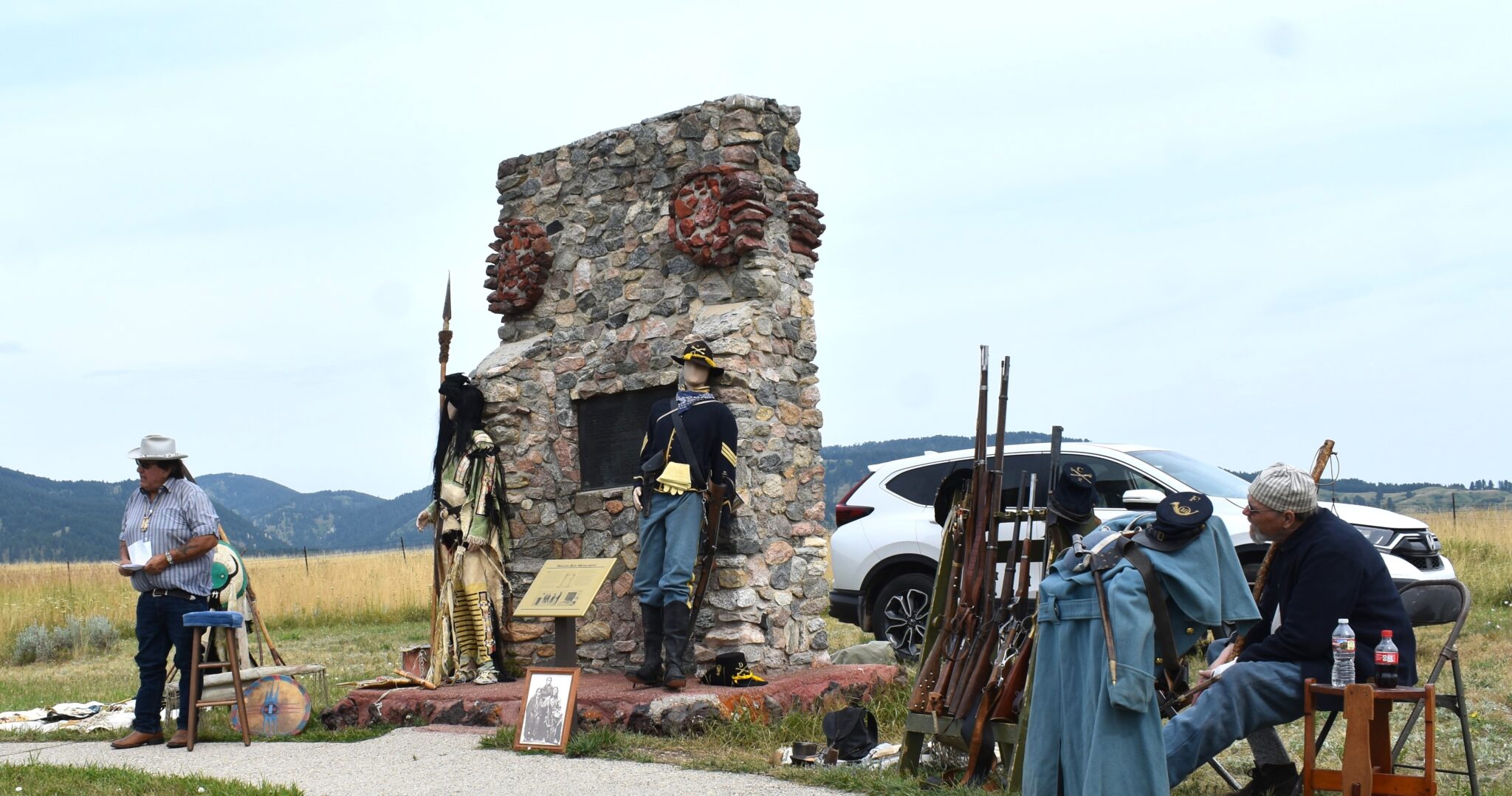
On a hot August day in 1867, twenty-six soldiers and six civilians were attacked by several hundred Sioux warriors when their party was sent from Fort Phil Kearny to cut wood.
Although out-numbered by the Sioux, the soldiers formed a defensive wall of the wooden wagon boxes to protect them, and they were armed with the new breech-loading Springfield Model 1866 rifles and lever-action Henry rifles.
They held off the attack for several hours, while the sun rose higher in the sky and beat down on the soldiers within the circle of wagon. At 2 p.m., a relief party from the fort rode in with a howitzer and Indians retreated. Due to the barricade created by the wagon boxes, there were fewer causalities among the wood cutting party than might have been expected.
On Wednesday, August 2nd, there was 156-year anniversary of the Wagon Box Fight. The presentation was titled, “They Surrounded the White Tents.”
Dave McKee, president of the FPK/BTA, introduced speakers Donovin Sprague, Miniconjou Lakota Historian, teacher of Native American history, and author; and Bob Wilson, historian and retired site superintendent at Fort Phil Kearny.
They presented both sides of the battle, and members of Kearny’s Frontier Regulars gave a weapons demonstration.
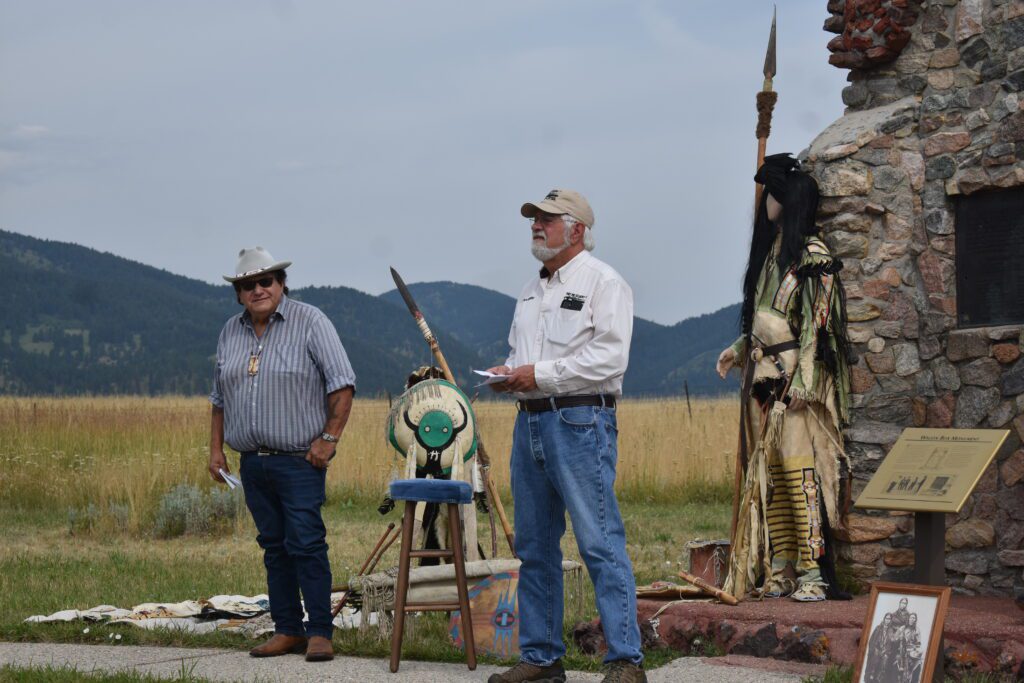
Donovin, whose Lakota name is ‘Hump,’ started the talk. He said that there were two Indian’s named ‘Hump’ or ‘High Backbone,’ his father and grandfather, who fought in the battles around the area, and historians often get them confused. He said that he was proud that his ancestors fought in the battle,
Dovovin talked about how he was given his name, and the fact that it had to be earned.
He talked about the battle, and how the Indians expected to be able to move in on the soldiers when they had to reload the old single-shot rifles. However, being armed with the new, faster loading rifles, the soldiers held off charge after charge until help arrived from Fort Phil Kearny.
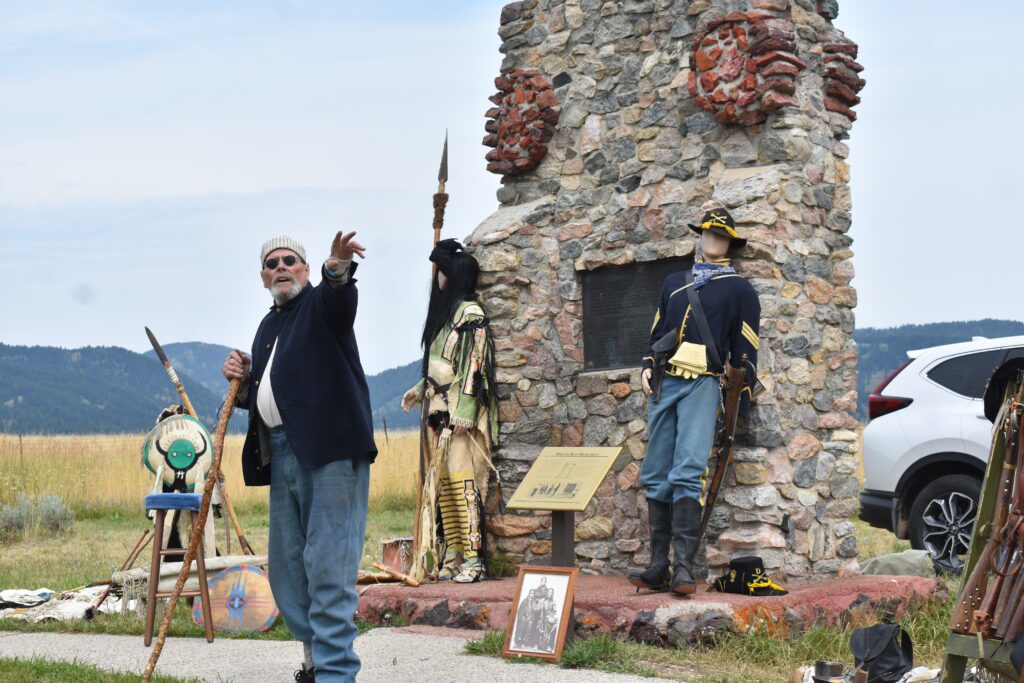
Bob Wilson, historian and former talked about archaeological evidence as well as oral and military histories about the event.
The fourteen wagons that formed the defenses breastwork was actually a corral for the mules. At the time the area where Story now stands was named Piney Island.
He said that one group of wagons and woodcutters went into the woods not far from the fort to cut wood, but there is no record of the wagon train being attacked or exactly what happened to that group of people.
He talked about why the Wagon Box Fight defenders held off the Native Americans.
Donovin said that this battle was the last major encounter between the U.S. Army and Lakota warriors along the Bozeman Trail in Wyoming.
The Native Americans retained the land until after the Battle of the Little Bighorn, when most of the leaders surrendered and they were sent to various reservations.
After the talks, the Fort Phil Kearny Regulars, Patti Wilson, Susan Wells, and Kyle Mediate gave a demonstration of the weaponry used at the fight.
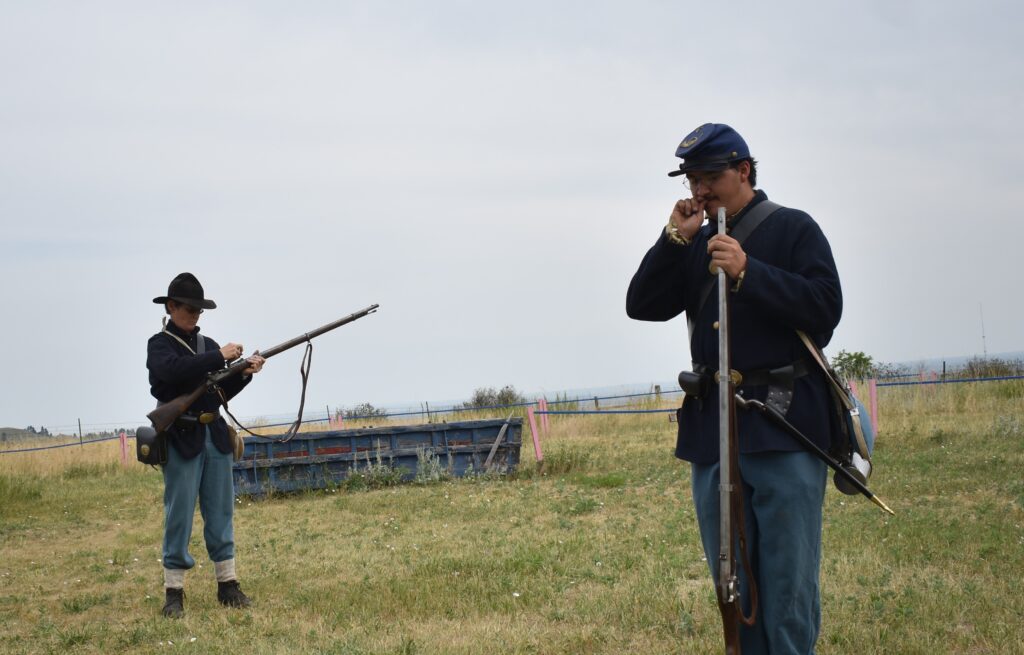
One reason this battle was so successful for the army was that the Native American’s were used to the army using the muzzleloaders, and they planned to bring up the second charge while the soldiers were reloading the muskets. The new rifles, Springfield Model 1866 and lever action Henry rifles, had cartridges instead of musket balls, and it didn’t take the soldiers any time to reload.
Even though the Springfield rifle jammed, the rifle could fire two shots in the time the muzzleloader could fire off one.
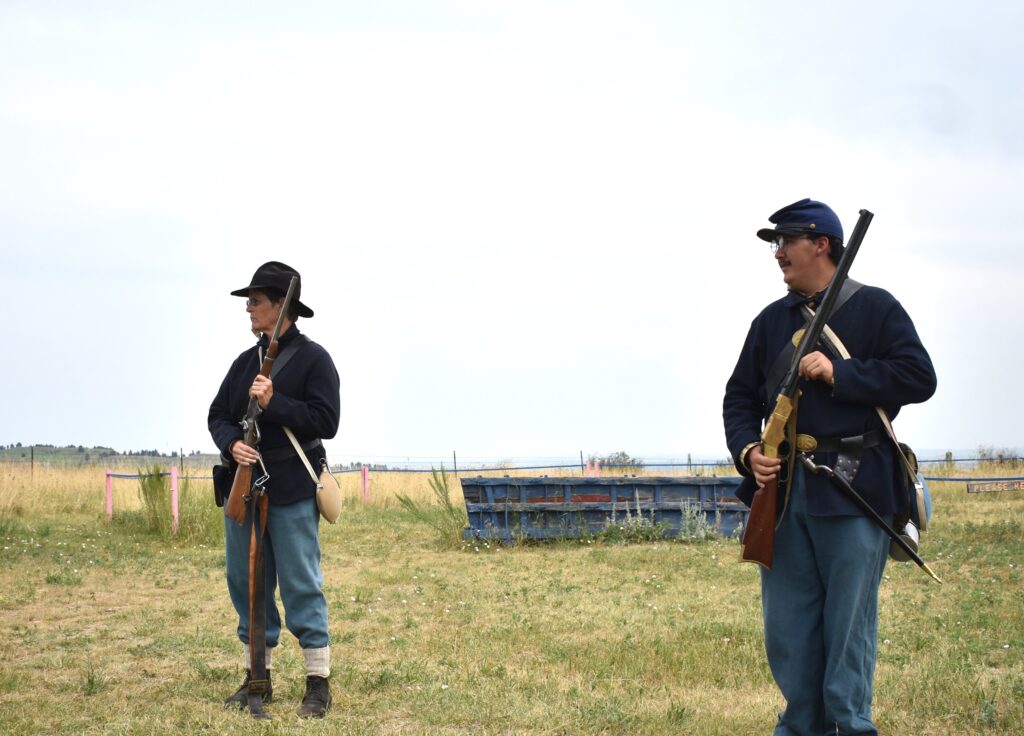
Today, a stone monument along with a plaque with the names of the soldiers and civilians involved in the fight stands near the battle site. There are also several information signs about the battle, a remembrance of the time when the Native American’s fought to reclaim their homelands from the white invaders.

